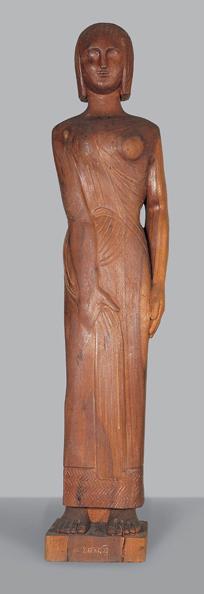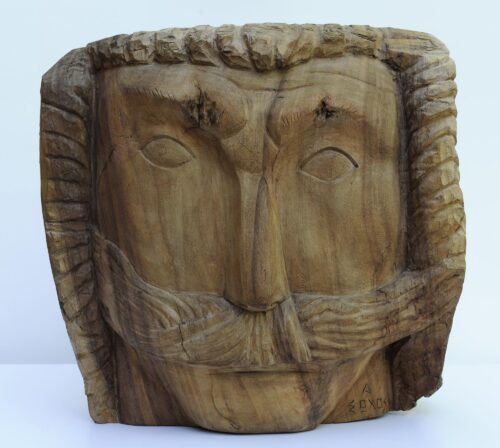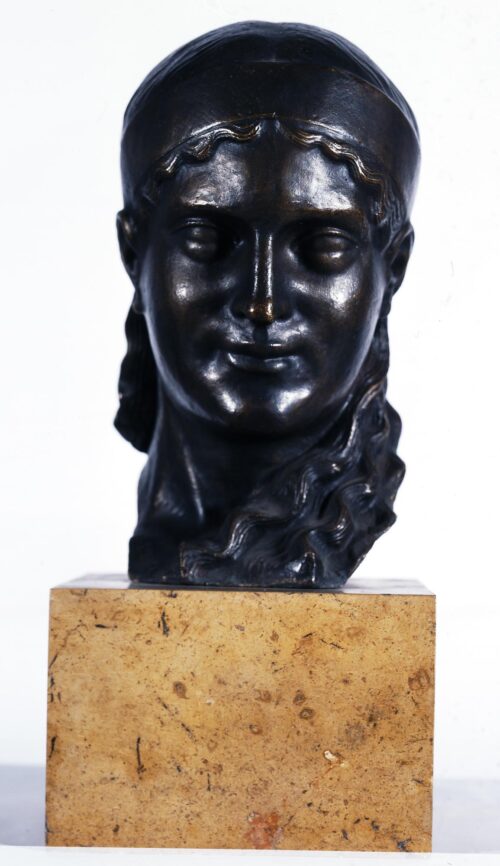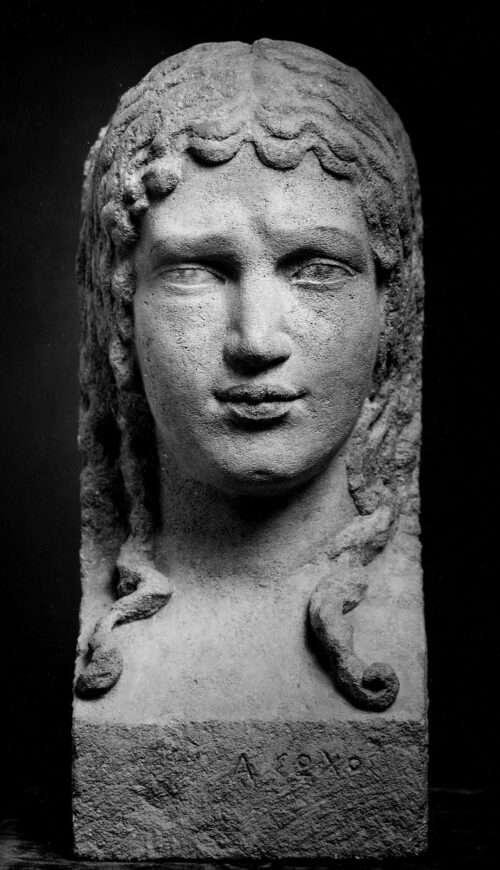
Sochos Antonios (1888 - 1975)
Resistance, [before 1958]
Having a family pedigree in sculpture, he received his first lessons from his father and his uncle, Lazaros Sochos, and went on to study at the School of Arts with Georgios Vroutos. In 1919, he went to Paris on Greek government scholarship, studying at the Academy of Fine Arts and also attending interior design courses. In 1922, he returned to Athens and in 1926 was elected Professor at the School of Architecture, NTUA.
His exhibition history included contributions to major group events in Greece and internationally, including exhibitions with artists’ groups “Omada Techni” and “Stathmi”, of which he was member, Panhellenic exhibitions, Paris Salons, as well as the Biennale of Venice (1934 and 1958) and the Sao Paulo Biennial (1955).
Early on, Antonios Sochos broke free of the dictates of neoclassicism and developed a personal plastic language, based on archaic Greek sculpture as well as the austere style, folk wood-carving, and influenced by the avant-garde trends which he discovered during his stay in Paris. Always focusing on the human figure, his works are inspired by mythology, Greek legends and folklore, made in stone and later wood, and exploring the possibilities offered by the textures of his materials. His works are characterized by abstract tendencies and an inclination for stylisation, balance, symmetry, frontality and immobility, reflecting the artist’s individual perception as well as his diverse influences.

Resistance, [before 1958]

Girl, 1955

Digenis, [before 1959]

Athenian Woman, [1920]

Head of Kore, 1921

We use cookies to make our site work properly, to personalize content and ads, to provide social media features and to analyze our traffic. We also share information about how you use our site with our social media, advertising and analytics partners. Read the Cookies Policy.
These cookies are necessary for the website to function and cannot be switched off in our systems. They are usually only set in response to actions made by you which amount to a request for services, such as setting your privacy preferences, logging in or filling in forms. You can set your browser to block or alert you about these cookies, but some parts of the site will not then work. These cookies do not store any personally identifiable information.
If you disable this cookie, we will not be able to save your preferences. This means that every time you visit this website you will need to enable or disable cookies again.
These cookies tell us about how you use the site and they help us to make it better. For example these cookies count the number of visitors to our website and see how visitors move around when they are using it. This helps us to improve the way our site works, for example, by ensuring that users find what they are looking for easily. Our website uses Google Analytics for statistics reporting.
Please enable Strictly Necessary Cookies first so that we can save your preferences!